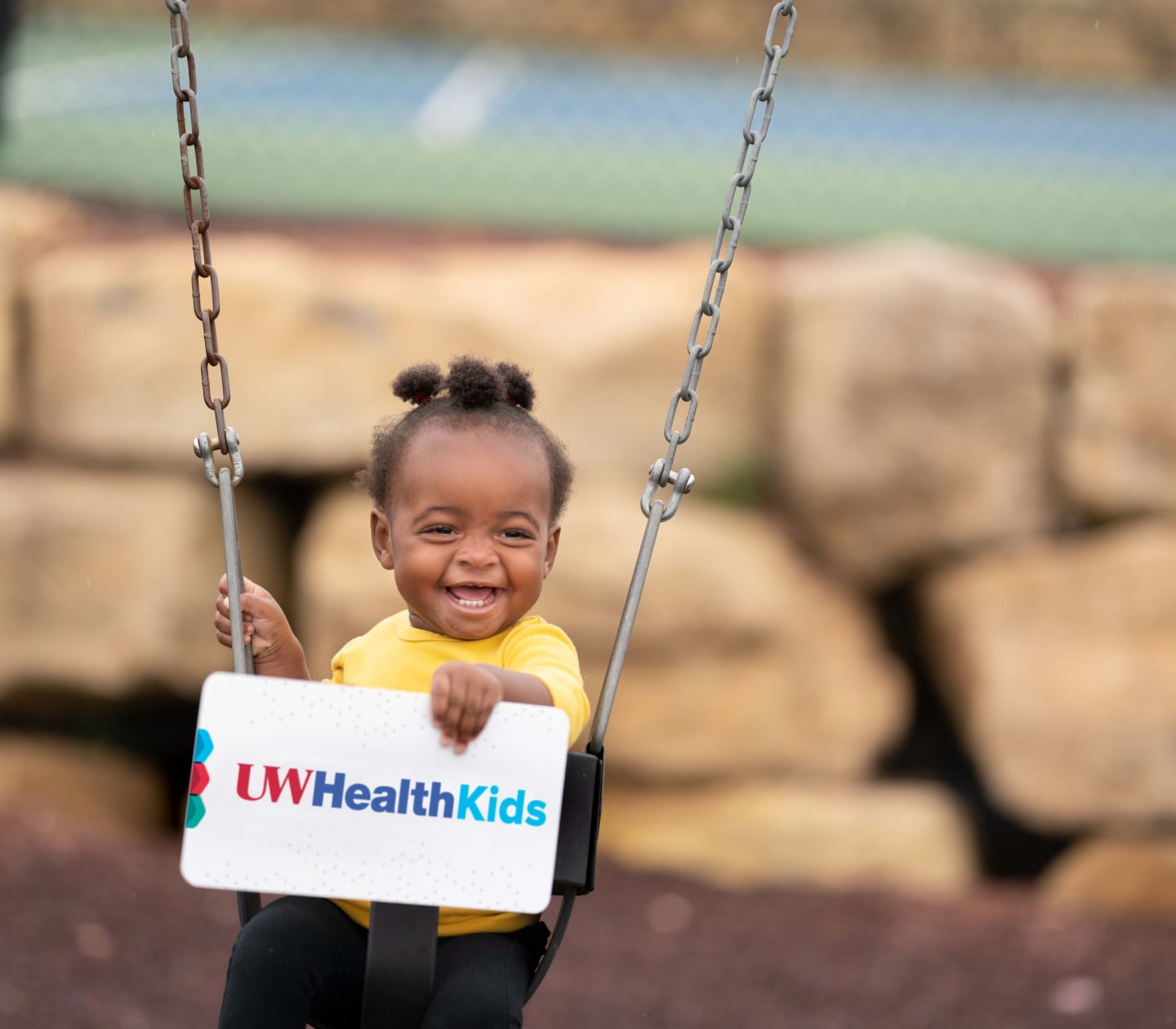When your child needs a medical procedure or test, UW Health Kids Sedation specialists keep them calm. We use sedation medicine to curb pain and help your child stay still. Our experienced team performs more than 1,700 sedations a year. Formed in 1991, we are one of the oldest pediatric sedation programs in the U.S.
Not moving for more than a minute or two can be hard for children. When they are afraid, it can be even harder. Our experts know how to comfort children and use medicine to keep them still during tests and procedures. A calm patient can ensure your child receives the proper care they need. There are three types of sedation we use to help your child.
Types of sedation
Minimal sedation
We give this mild form of sedation in gas or liquid form. Your child may still be awake. They are more relaxed and less aware of what’s happening. We use minimal sedation for catheter insertions, IV insertions and injections. Learn more from our videos:
Moderate sedation
We give this medicine as a gas, liquid or through a vein by IV. Moderate sedation makes your child very relaxed with little or no pain. Your child may still be awake. Or they may fall asleep and be easy to wake up. Your child may not remember the procedure. We use moderate sedation for fracture reductions, long line insertions and wound care. Learn more from our videos:
Deep sedation
We give this medicine through a vein by IV. Your child falls asleep and remains still. Your child will not know what’s happening and will not remember the procedure. We use deep sedation for tests that are painful, such as biopsies or spinal taps, or for imaging procedures that require no movement, like MRI and CT scans. Learn more from our videos:
Procedures that need deep sedation
When you’re a child, it’s hard to stay still. We use deep sedation for many procedures and tests that require complete stillness, including:
Bone marrow biopsy
CT scan
Kidney and liver biopsy
MRI scan
Spinal tap
Deep sedation vs. anesthesia
Deep sedation creates a lighter sleep than anesthesia. Under deep sedation, your child is unaware of what’s happening. While in this light sleep, your child can respond to some stimuli.
General anesthesia creates a deep sleep. Your child is unaware of their surroundings and does not respond to stimuli. We use general anesthesia for surgery and some diagnostic procedures.
We also use anesthesia if sedation is not safe for your child. Your child might need anesthesia rather than sedation if they have:
Facial disorders that distort airways
Increased pressure on the brain
Sleep apnea or central apnea
Uncontrolled GERD
Uncontrolled seizures
If your child needs sedation for a medical procedure, you will meet with our UW Health Kids Sedation team. We review your child’s medical history and explain the level of sedation required. If it’s safe to sedate your child, we make an appointment to sedate them before their test or procedure.
There are a few things to do to prepare your child for sedation. Your child must not eat or drink, called fasting, before being sedated. General fasting includes not giving:
Water and clear liquids: 2 hours
Breast milk: 2 to 4 hours
Formula or light meal: 6 hours
Full meal: 8 hours
Plan to arrive at the sedation clinic between 1-2 hours prior to the start time, as written on documents sent to your house prior to the appointment.
The care team performs an up-to-the-minute physical exam. We review your child’s health history. If your child has a cold, cough or fever, we may postpone the sedation and their procedure or test. We discuss with you the type and level of sedation needed.
If we are using an IV to give the sedation medication, we numb your child’s skin before inserting the IV to minimize pain.
You can remain with your child during the sedation process. Once they are calm or asleep, the care team will prepare them for their procedure or test.
After the procedure or test, and it’s safe for your child to move around, they awake from sedation. We give your child fluids, either by mouth or through an IV, once they wake up. When your child’s vital signs return to normal for 30 minutes, and their procedure or test allows, you can take your child home.
Your nurse will give you any instruction needed to take care of your child before you leave the clinic.

The UW Health Kids Sedation team includes experts in child life, pain management and sedation.
Juan Boriosi, MD
Pediatric Critical CareChristina Bryndzia, DO
Pediatric Critical CareMegan Peters, MD
Pediatric Critical CareMolly Russell, NP
Pediatric Critical CareTricia Smith, NP
Pediatric Critical CareSushant Srinivasan, MD
Pediatric Critical Care
UW Health Kids Sedation is located at American Family Children's Hospital in Madison, Wis.
American Family Children's Hospital Pediatric Sedation Clinic





